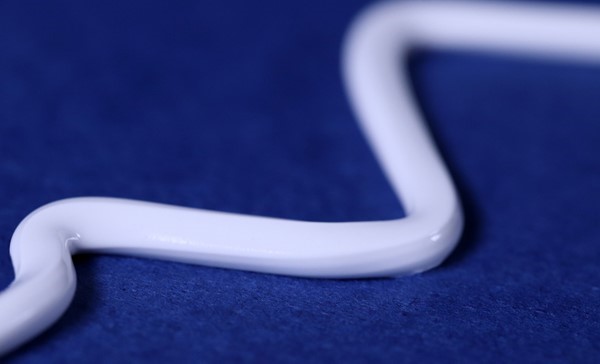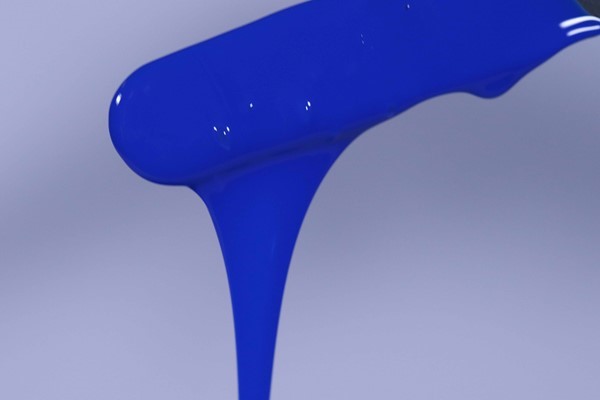- Elkem
- Products
- Silicones
- Heat consistency rubber
- Silicone rubber
An introduction to silicone rubbers
Silicone rubbers comprise straight, high-MW silicone chains, reinforced by crosslinking, and are divided into heat-cured rubber (HCR), liquid silicone rubber (LSR), and room-temperature-vulcanized (RTV) rubbers.
At Elkem Silicones, we pride ourselves in being one of the world's leaders in fully integrated silicone manufacturing, with R&D laboratories, production sites and sales offices located in Europe, North America, Latin America and Asia Pacific.
Silicones have a chemical structure based on alternating units of silicon and oxygen. The difference between silicones compared with natural silica, lies in the organic, carbon containing groups that are included in their molecular framework. According to the type of organic groups attached in this way, and the production and compounding methods used, a great variety of products can be obtained. Their final consistency can be free flowing, viscous paste-like elastomeric or even rigid.
Silicone Rubber is one type of silicone made from reactive silicones gums (straight chains with very high molecular weight) containing various reactive groups. We distinguish three types of silicone rubbers:
- Heat Cure Rubber or High Consistency Rubber (HCR),
- Liquid Silicone Rubber (LSR)
- One or two components Room Temperature Vulcanized Silicone Rubber (RTV-1 and RTV-2).

One-component room-temperature-vulcanized (RTV-1) silicone rubber
|

Two-component room-temperature-vulcanized (RTV-2) silicone rubber
|
To know more about Silicone elastomers, access our guide, we will present you:
- Why choose silicone elastomers ?
- Why choose Elkem Silicones?
- BLUESIL™ Heat Cure Rubber General Purpose and Specialty products
- BLUESIL™ Polyaddition Heat Cure Rubber
- BLUESIL™ Additive
- Manufacturing processes
Our BLUESIL™ Heat Cure Rubber or High Consistency Rubber
Heat Cure Rubber provides outstanding properties designed for today's demanding markets:
- Heat stability (or thermal resistance) over a wide range of temperatures from -50° to 200°C (and even up to 300°C with specific additives)
- Stable properties at low and high temperatures (-50°C to 300°C) and high voltage. Silicone rubbers are superior to organic rubbers in general in those aspects.
- Innocuity due to the inorganic Si-O-Si chain
- Chemically inert
- Photo-oxidative stability
- Absence of residual reactive groups once cured.
- Very good flame retardancy or even fire resistance when we use the proper halogen-free additives or reinforcing fillers: a ceramification of the silicone occurs when it is burned.
- Non-toxic smoke in case of fire
- Good flexibility
- Good mechanical properties (tear strength, compression set, tensile strength…)
Heat Cure silicone rubber is a best in class material in industries when dimensional stability and mechanical strength are needed. It is also a material of choice when we need to ensure fire resistance or very low temperature resistance.
That's why Heat Cure silicone rubber is a best in class material in industries when dimensional stability and mechanical strength are needed. It is also a material of choice when we need to ensure fire resistance or very low temperature resistance.
Our BLUESIL™ Polyaddition Heat Cure Rubber
BLUESIL™ polyaddition Heat Cure Rubber is a range of platinum-catalyzed silicones. The polyaddition crosslinking solution offers several advantages:
- The reaction is much faster than the one initiated by peroxides, which improves productivity and does not generate any toxic by-products
- Platinum cured products can comply with regulations required for food contact or medical applications
- Mechanical properties of platinum cured products are improved (good compromise of elongation at break/tear strength/ compression set)
- Bright colors are easier to obtain with a platinum cure system.
Liquid Silicone Rubber (LSR) is a two-components system: one component contains a platinum catalyst and the other component contains methyl-hydrogen-siloxane as a cross-linker and an alcohol inhibitor. The two main difference between Liquid Silicone Rubber (LSR) and Heat Cure Rubber (HCR) are
- the viscosity: LSR is much more flowable.
- the curing process: LSR only uses addition curing with platinum and HCR can use either a peroxide or a platinum curing process.
Liquid Silicone Rubber brings several benefits such as productivity, precision, biocompatibility or long-term stability.
Our BLUESIL™ Liquid Silicone Rubber
Liquid Silicone Rubber (LSR) is a two-component system: one component contains a platinum catalyst and the other component contains methyl-hydrogen-siloxane as a cross-linker and an alcohol inhibitor. The two main differences between Liquid Silicone Rubber (LSR) and Heat Cure Rubber (HCR) are
- The viscosity: LSR is much more flowable.
- The curing process: LSR only uses addition curing with platinum and HCR can use either a peroxide or a platinum curing process.
Liquid Silicone Rubber brings several benefits such as productivity, precision, biocompatibility or long-term stability.
Manufacturing processes
Several processes can be used to manufacture silicone rubber
- Molding of silicone rubber: HCR can be manufactured using injection molding, compression molding and transfer molding. LSR is processed by injection molding.
- Extrusion and coextrusion for silicone rubber: a continuous process used to manufacture cables, profiles or tubes. We offer silicones with different curing systems for different processes.
- Calendering for silicone rubber: calendering is a process to manufacture uniform sheets made of silicone and textile. The formulation of our silicones can be customized to fit with the process.
Applications
Silicone rubber serves in a wide range of products, markets, and applications due to its various properties and technologies.
Key market and applications include:
- Automotive market: automotive is a growing and demanding market. Thanks to its reliability, stability and thermal resistance, silicone rubber is a material of choice for parts near the engine for ICE vehicles, such as hoses, dampers or mounts. In addition, Elkem Silicones offers solutions dedicated to electric vehicles. Silicone can be used to produce battery cables, high voltage cables and flexible cables. The solutions can comply with OEM standards such as the LV216.
- Railway market: railway market has stringent fire-resistant requirements and our silicone complies with the European standard EN 45545. Applications include gangway and bellow, profiles and cables.
- Cables market: with increasing demand in energy, the role of cables is becoming more and more crucial. To meet the demand, manufacturers are looking for safer, more reliable and innovative solutions. Silicone rubber insulated cables provide heat and fire resistance and present high mechanical properties. Silicone rubbers offers electrical insulation and they can be used for safety cables, construction cables, railway cables, high voltage cables…
- Food contact: we provide safe solution for food contact applications such as baking pans, baby bottle teats, tubes for beverages or even oven sealing. Our solutions comply with the most stringent regulation: FDA or EC directive for instance.
- Power market: due to its outstanding advantages in terms of crack resistance, water repellency, antifouling, tracking resistance and corrosion resistance, silicone rubber is widely used in power markets such as insulators, cold-shrinkable cable accessories and lightning arresters.
- Office printing market: Silicone rubber for rollers has the advantages of low hardness, good flexibility, low compression set, long service life and good wear resistance, anti-static, and moisture resistance.
Our Offering
Elkem Silicones provides both high quality raw materials including silicone rubber bases and silicone additives for in hour mixing operations, as well as ready to use compounds from our MIX&FIX Centers™.
Our MIX&FIX Center™
Our MIX&FIX Center™ are located in the heart of major elastomer and silicone rubber producing regions, closely respond to customer needs. They advise customers and provide them with custom-made formulations from the BLUESIL™ HCR (High Consistency Rubber) range with very short lead times that meet their specifications and are compatible with their manufacturing requirements.
Our expert teams can also provide hands-on training for your technicians and operators and can assist you in understanding regulatory compliance issues.
MIX&FIX Center™ is designed to help you create your own product. Do not hesitate to contact us for more information.
THE DIFFERENT MANUFACTURING METHODS
Contact us
Take your business to the next level by partnering with a world-leading material manufacturer.